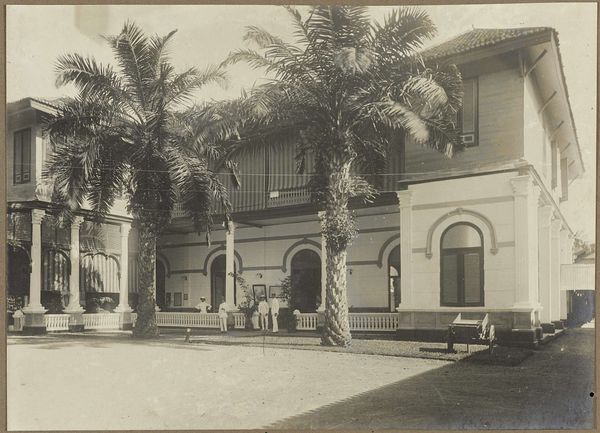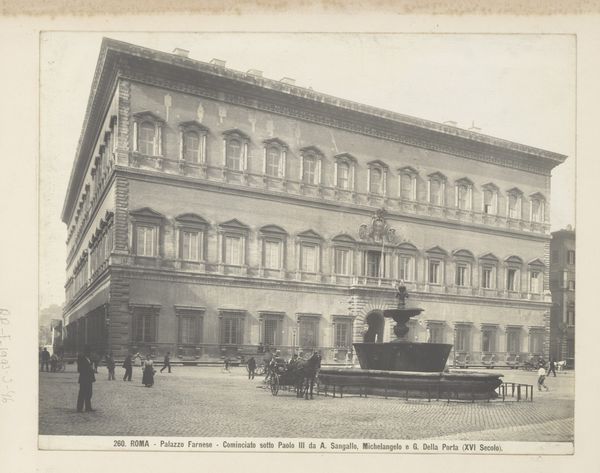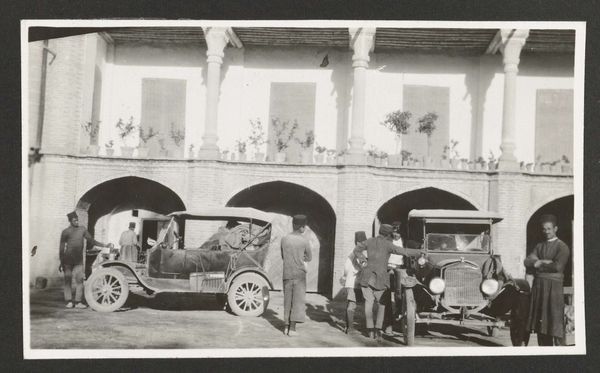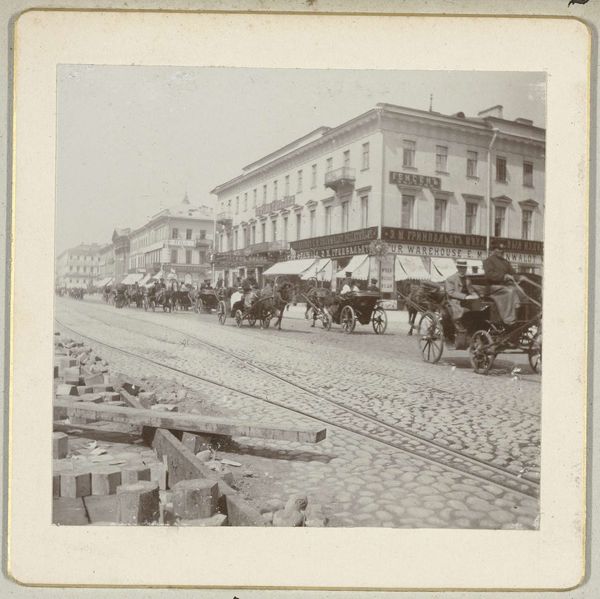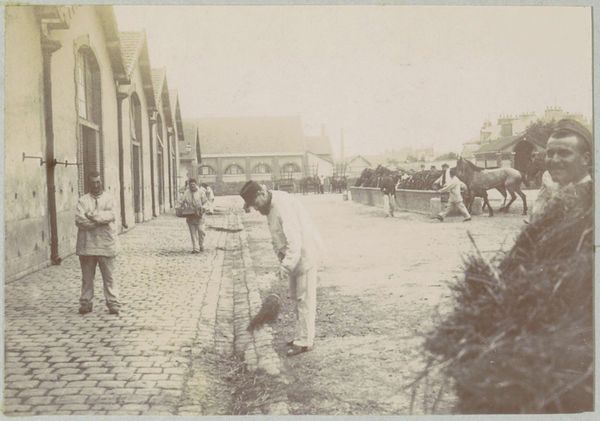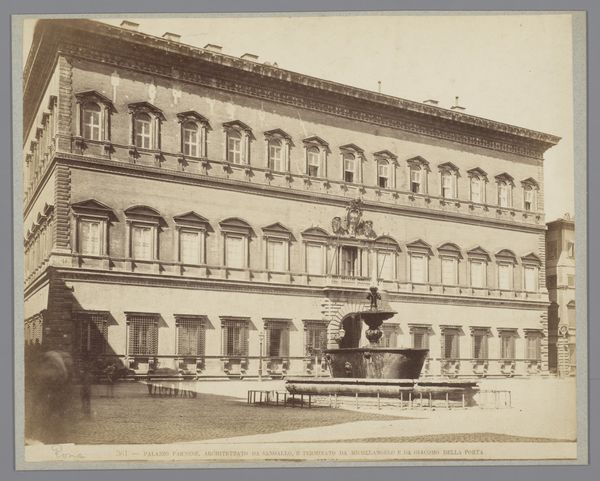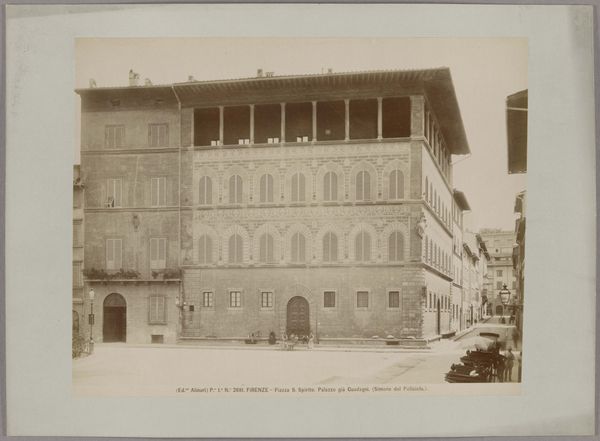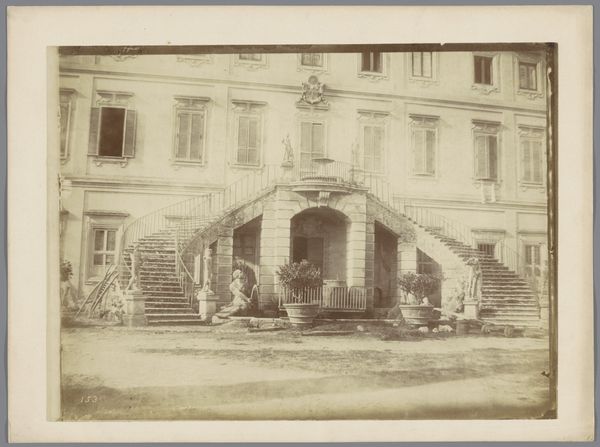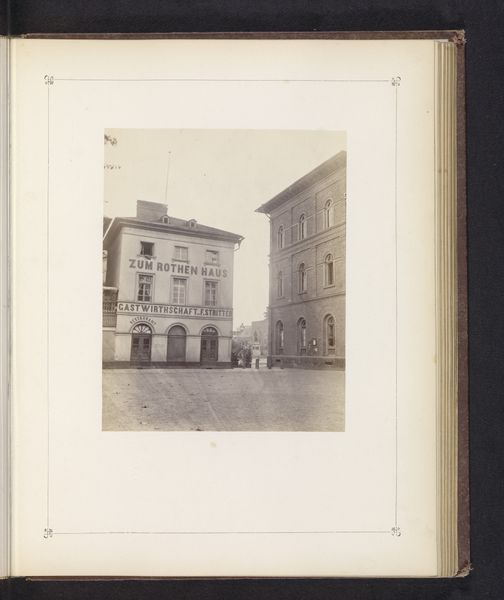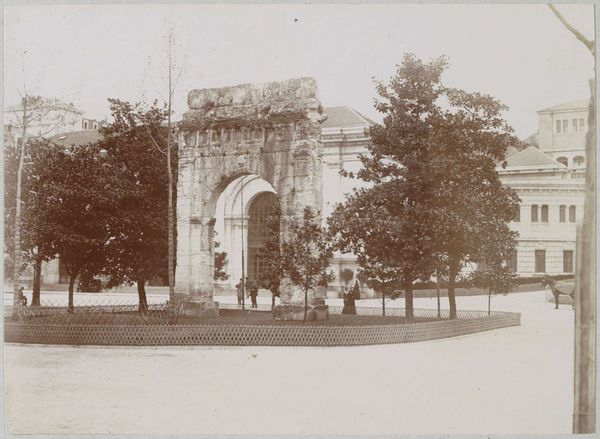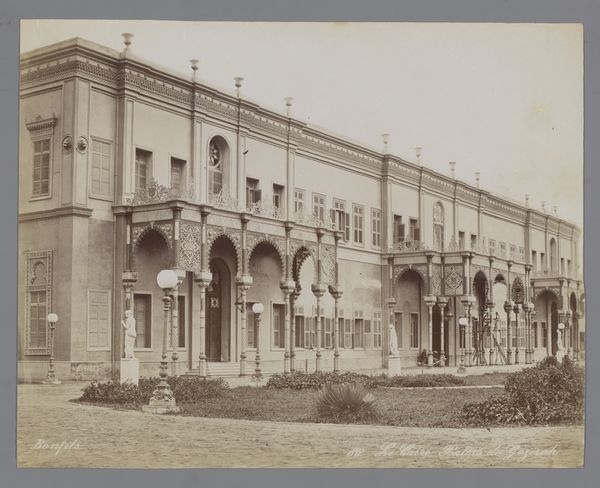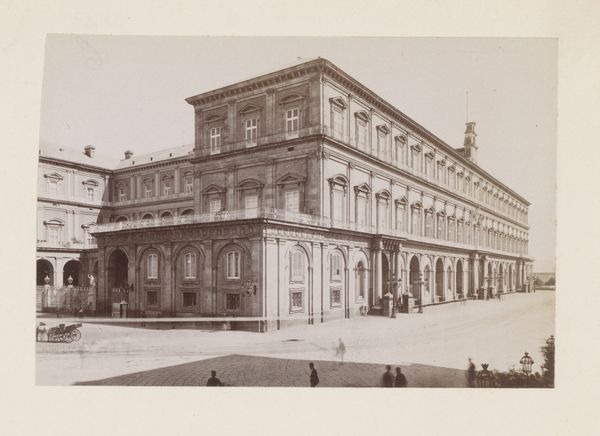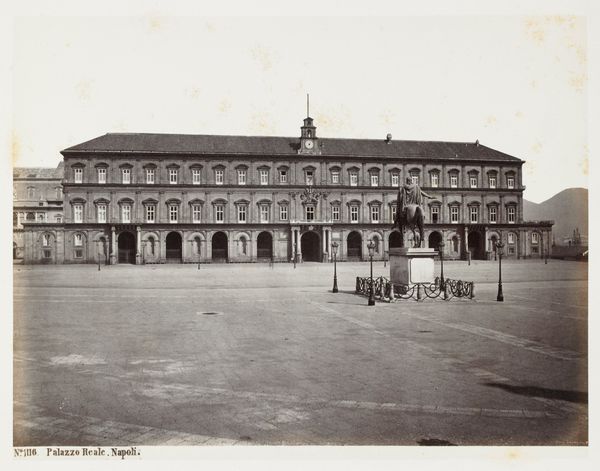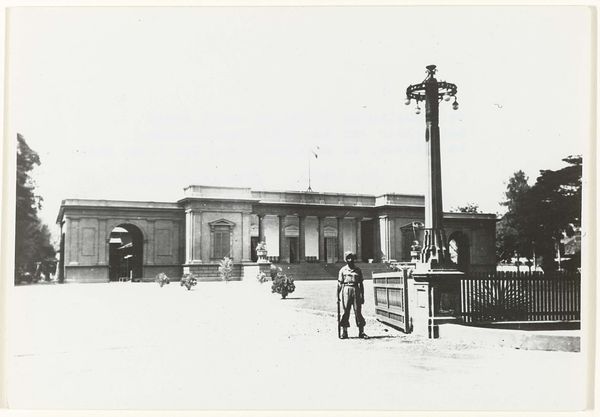
print, photography, gelatin-silver-print
# print
#
landscape
#
photography
#
gelatin-silver-print
#
realism
Dimensions: height 82 mm, width 120 mm, height 259 mm, width 365 mm
Copyright: Rijks Museum: Open Domain
Editor: This is "Tsarenkanon op het Kremlin," a gelatin silver print from 1898. The sheer size of the cannon against the backdrop of the Kremlin buildings makes me think about the power and history it represents. What's your interpretation of this photograph? Curator: This image strikes me as particularly revealing about late 19th-century industry and labor. Think about the immense effort and resources required to forge such a cannon, from mining the ore to the skilled labor involved in its casting and decoration. Consider it a testament to a complex web of social relations tied to military production. How does the photographic medium itself play into this narrative of material and production? Editor: That’s interesting – I hadn’t considered the labour aspect so explicitly. The photo almost makes it look…timeless. The cannon's just *there*, solid, and enduring. The fact that it's a photograph… it's like it freezes that moment of industrial power for consumption, isn't it? Curator: Exactly! And what about the photograph as an object itself? Gelatin silver prints like this one required specific materials, chemical processes, and skilled labor. Photography became a tool, in a sense, mirroring and serving industry and documenting that very power. It also brought that display of power to the masses. Think of the print as a commodity, widely available. Does that framing change how we look at the subject? Editor: Definitely. The print being widely available makes the power feel more... distributed, even, like the masses have access to a symbol that was previously so exclusive. This makes me appreciate the multiple layers involved – not just the subject matter, but also the making and circulation of the artwork. Curator: Precisely! It’s all about unraveling the story behind the object, understanding the materiality, and the social dynamics interwoven within its creation and reception. It allows us a glimpse into the systems that produced and sustained power at the time.
Comments
No comments
Be the first to comment and join the conversation on the ultimate creative platform.
